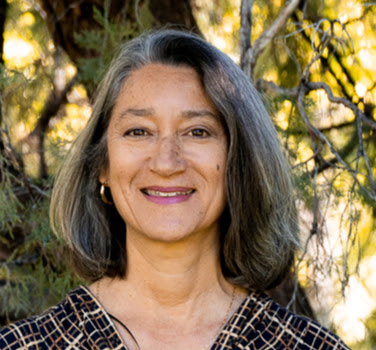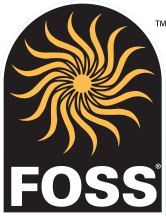As schools and districts implement the Next Generation Science Standards (NGSS), using three-dimensional learning, focused on figuring out phenomena, there’s another critical piece that needs ongoing attention—making sure we tap into the assets and diverse needs of all students. How do we truly ensure every child is engaged in the science learning experience and developing agency?
The Learning Policy Institute published a report called, Closing the Opportunity Gap: How Positive Outlier Districts in California Are Pursuing Equitable Access to Deeper Learning. The researchers closely studied seven districts where African American, Latino/a, and white students did better than predicted on state tests, controlling for socioeconomic status. Among the list of common characteristics of these districts is a widely shared, well-enacted vision that prioritizes learning for every child. The operative word here is every, not 80%, not most students, but all students. For these and many other high-performing districts, access and equity means every child engaging in authentic and rigorous learning experiences where their participation is valued and they are supported in reaching their full potential. The districts had different pathways and other critical factors for success, yet first and foremost is prioritizing learning for every child by making teaching and learning student-centered. (Read the full report on the Learning Policy Institute site.) For example, at Sanger USD, the district mantra is, “Every Student, Every Day, Whatever It Takes.” The report states, “This phrase places students at the center of learning: Educators are granted discretion to make the system fit the student, not vice versa.”
While the study focused primarily on achievement in ELA and math, the NGSS call for the same rigor and deeper learning, e.g., students constructing explanations and arguing from evidence. So, how do we ensure every child is engaged in the science learning experience and developing agency? By focusing on those students who are on the margins. Think about the “curb cut” metaphor. Back in the 1970s, accessibility rights groups had had enough of struggling to get up and over curbs and pressured the city of Berkeley to make curb cuts, those slopes on the corners that make it possible for people in wheelchairs to navigate the city sidewalks. Curb cuts are now found all over the world and provide access for millions of people who would not otherwise be able to safely travel through cities. And the effect has benefited millions more—people pushing strollers, making deliveries, rolling suitcases, riding scooters, etc. The curb cut effect makes the point that by providing critical access for some, all benefit.
FOSS has embedded as many strategies as possible in the instructional design to support those who critically need an access point and to enhance the learning experience for all. Yet, every classroom is different, every class changes year to year, and every child learns differently. This means constantly rethinking what strategies you will need to provide in your instruction.
Consider teaching your next lesson with your most vulnerable students in mind. Think about the one who worries you the most. List the reasons you think this student will struggle. Now, think about this same student with an assets-based perspective. What does this student bring to the learning experience that is positive?
Here are a few examples:
Challenge: Won’t know the new vocabulary.
Asset: Has own words to describe observations.
Challenge: Won’t understand the explanation.
Asset: Has experiences related to the concept.
Challenge: Doesn’t like to write.
Asset: Likes to share ideas orally.
Challenge: Doesn’t like to take turns.
Asset: Is enthusiastic.
Challenge: Won’t listen to directions.
Asset: Has their own way of thinking about things.
Plan the lesson with this student in mind, thinking about their assets.
- For the first challenge listed above, if the lesson has a lot of new vocabulary, make sure to have the words ready to put on the word wall. Have students describe their observations in their own words, then connect their words to the new vocabulary word.
- For the second challenge, if the student struggles with new ideas, ask them what they think they know about the concepts before beginning the investigation. Show another object, video clip, or image that students are familiar with that relates to the new concept.
- For the third challenge, anticipate the writing demands and have sentence frames ready just in case. Encourage students to explain their thinking orally before writing in their notebooks.
These are just a few examples of how to capitalize on what students know and can do. While these strategies may be providing critical supports for one or a few students, they will most likely positively affect the learning experience for the class as a whole.
What educators find is that by attending to the needs of the students you think may find the learning task the most difficult, you are supporting the learning for all students. Everyone benefits.

Diana B. Vélez
Ms. Vélez is a curriculum developer and professional learning provider for the Full Option Science System Project (FOSS K–8) at the Lawrence Hall of Science. She specializes in English language development and the integration of literacy in science teaching and learning. Ms. Vélez assists in the development and implementation of FOSS instructional materials and creates pedagogical resources that support access and equity. She also leads professional learning experiences for educators, administrators, families, and community members using FOSS instructional materials to develop scientific literacy, teacher capacity, and systemic change in schools and districts across the country and internationally. Before coming to the Lawrence Hall of Science, Ms. Vélez was the instructional leader for a science-centered elementary school in Oakland, California and was a founding-member and teacher in a Spanish dual-immersion program. She has two bachelor’s degrees from the University of California, Berkeley and bi-lingual teaching credentials from California State University, East Bay.

